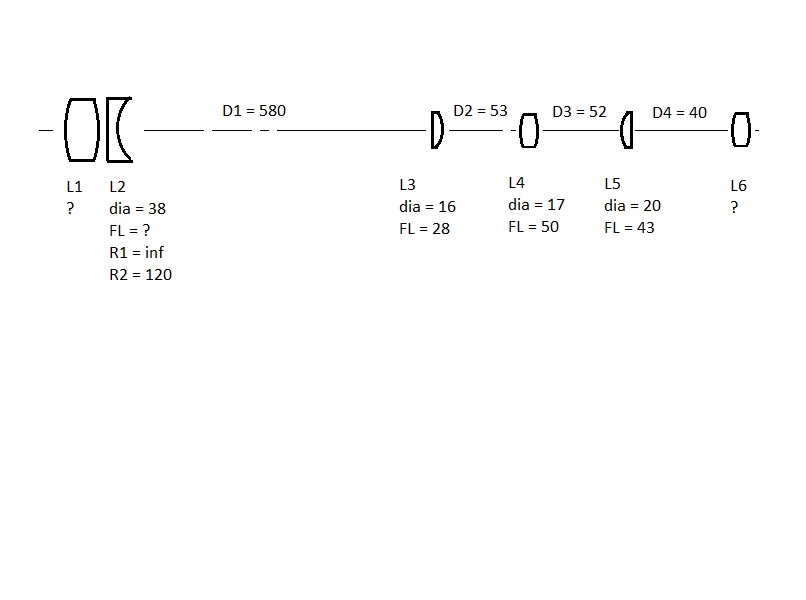Decagonal mahogany tube with brass end fittings. Dust caps both ends. 3 lens erector (?) Eyepiece lens missing. Positive part of objective is missing.
The layout of the optical system is shown below:

According to Clifton, Directory of British Scientific Instrument Makers 1550-1851, Ribright & Son [George & Thomas II], worked as opticians at 40 The Poultry, London, from 1778-1783.
This instrument was therefore made after John Dollond's patent of 1758 had expired.
A Timeline for achromatic objectives, based on Gee, McConnell and Morrison-Low, ‘Francis Watkins and the Dollond Telescope Patent Controversy’, is as follows:
c. 1740 Chester Moor Hall conceives of doublet objective with crown and flint glasses, but although he has examples made, he does not publish the idea widely.
1753 John Dollond enters field with letter to Royal Society
1758 John Dolland obtains patent ‘for the invention of a new method of making object glasses of refracting telescopes’ without citing Hall.
1758 John Dollond reports experiments to RS and that he can simultaneously correct chromatic and
spherical aberrations. He is awarded Copley Medal.
1761 Death of John Dolland.
1763 Peter Dollond brings action against Francis Watkins and Addison Smith. Lord Mansfield rules
patent should go to first to commercialise, not first to discover.
1764 Petition from Worshipful Company of Spectaclemakers seeking withdrawal of the patent
includes name of George Ribright
1765 James Champneys advertises Hall-based instrument
1765 Peter Dolland succeeds in action against James Champneys
1767 Peter Dolland obtains injunction against several other makers.
1772 Dollond patent expires
1780 Ribright & Son telescope made